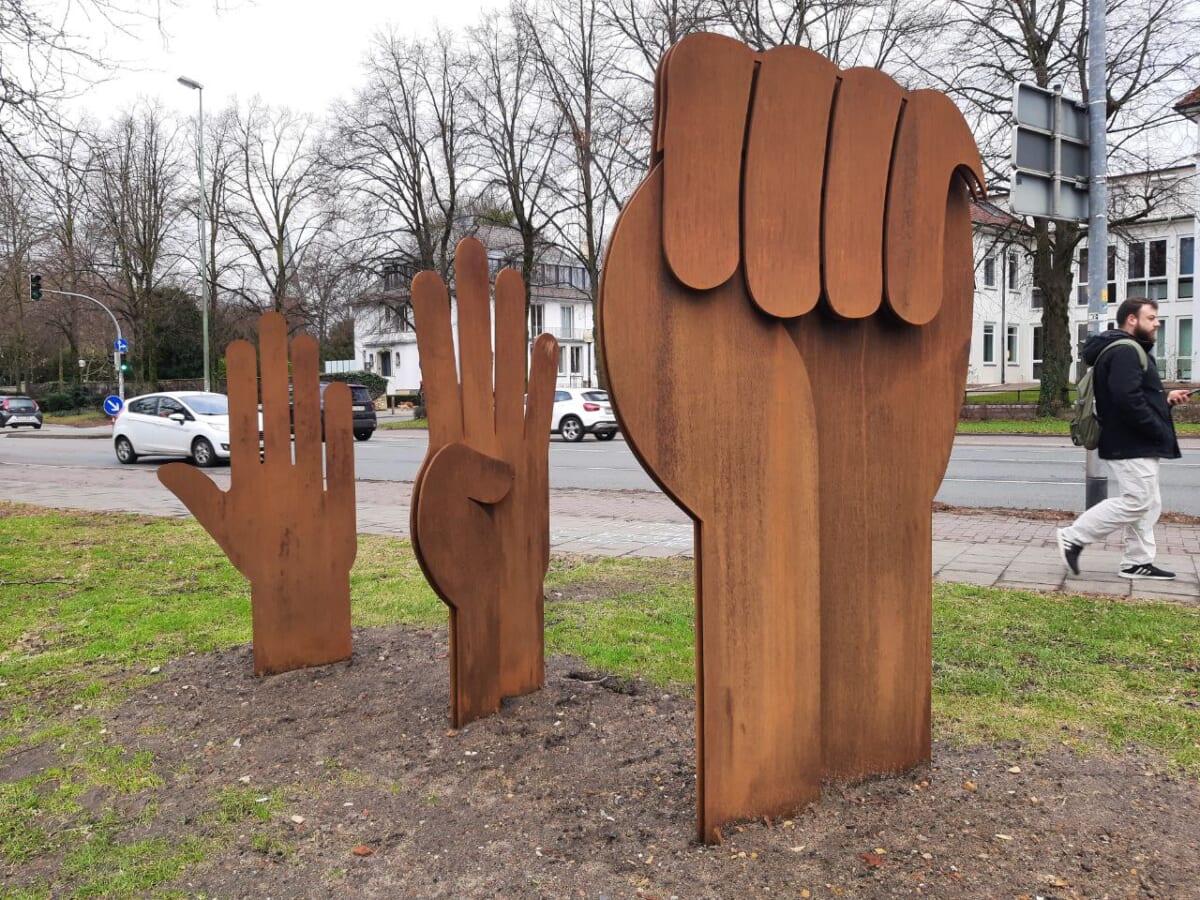(Excerpt from the opening speech, held on 24.01.2024)
A feminicide occurs every third day in Germany, worldwide every 11 minutes. In 2021, there were 113 people in Germany, women in the statistics, who were killed by their partner or ex-partner. And in the same year, crime statistics list 143,000 women who experienced intimate partner violence. (bpb) The statistics do not take trans women into account and we have no reliable figures on lesbians, gays, bisexuals, trans, inter and queer people.
The ni, the small difference between femicide and feminicide, was brought into the debate by mexican feminist Marcela Lagarde, emphasizing the structural dimension and state responsibility. Feminicides are usually the culmination of a longer history of gender-specific violence. Behind this is a cis-male gesture of dominance. The idea of being able to control other bodies and, not least, the violent maintenance of the patriarchal status quo.
Gender-based violence means that people experience violence – are harassed, persecuted, killed – because of their gender. This happens because of unequal power relations resulting from our social order.
This violence is structural and a social problem. The history of the fight against this violence is long. We owe a lot to historical feminist movements. To this day, women’s shelters, feminist activists, associations and political groups fight against this violence on March 8, the central feminist day of struggle. On November 25, the day against patriarchal violence, and every single day of the year. Ni una menos is the slogan of Latin American feminists that has become known around the world, and no more is the German-language version. No more should experience violence, no more should be murdered.
During the 2020 pandemic, the Canadian Women’s Foundation announced the Signal for Help that you see here. The Women’s Funding Network adopted it and spread it worldwide. Since then, it has proven to be effective when people need to raise awareness in emergency and violent situations. The more it is spread, the more helpful it will be. At the same time, the outstretched hand is also a signal to “stop” and the fist is a sign of resistance. For all these reasons, I decided on this concept. It seemed most important to me that the memorial against femicide and gender-based violence should not simply become a decorative, abstract element in the urban space that can be overlooked by everyone.
Admonishing may initially sound like a raised index finger. Strictly speaking, it means on the one hand: “to urge emphatically to a certain behavior or action that seems necessary”. And secondly, “to remind emphatically of something, especially a commitment made or the like” (Oxford Dictionary). Grammatically, this is a weak verb, but in my view, emphatic requests and reminders are powerful tools in the fight against gender-based violence. I see this memorial as one facet in the struggle for a more feminist Osnabrück and in the fight for a safer future for all. I would like to take this opportunity to pay tribute to all those who have been fighting for this for years, especially here in this city. I see this memorial as a sign of recognition for this work. I see it as an appeal to all those who have not yet addressed the issue. And I hope that the memorial will help shape this city in the most positive and feminist sense.
Special thanks to designer Peter Schmitz, his colleagues Steven Sood and Thomas Kerl. Thanks to the management of the Kunsthalle Osnabrück for the recommendation. Thanks to the Bartniks. Thanks to the city of Osnabrück, but above all to Patricia Heller and the staff of the Equal Opportunities Office and the jury.
Art as I understand it is not something that people do alone. If it is to be effective, it is created in social contexts and contributes to thought and action in its own way. I hope that together we can all take more action on gender-based violence. Ni una menos! No more!
https://taz.de/Femizid-Mahnmal-in-Osnabrueck/!5984443/
https://www.schmitz-peter.de/Mahnmal-geschlechtsspezifische-Gewalt-und-Femizide-von-Irene-Melix.htm
